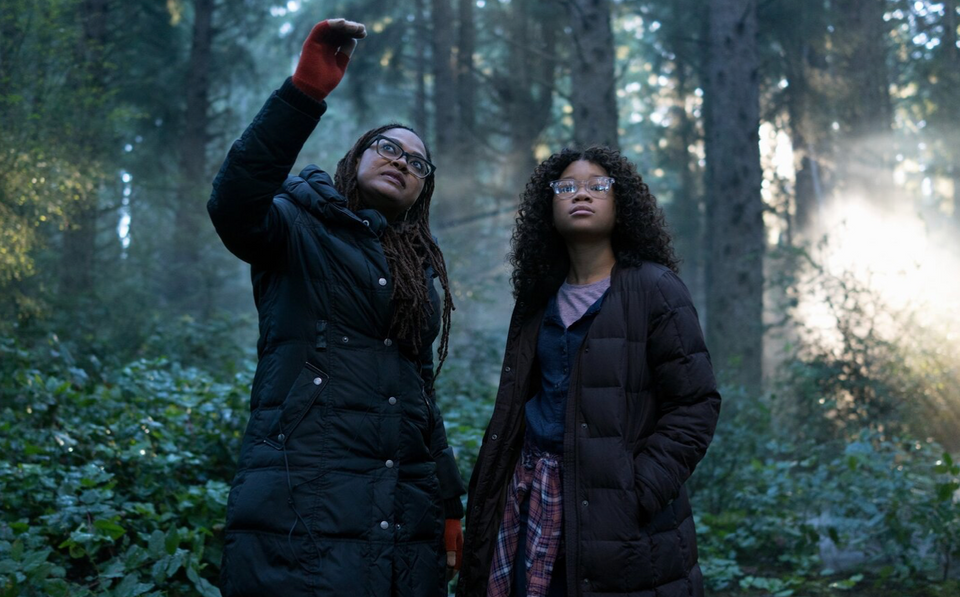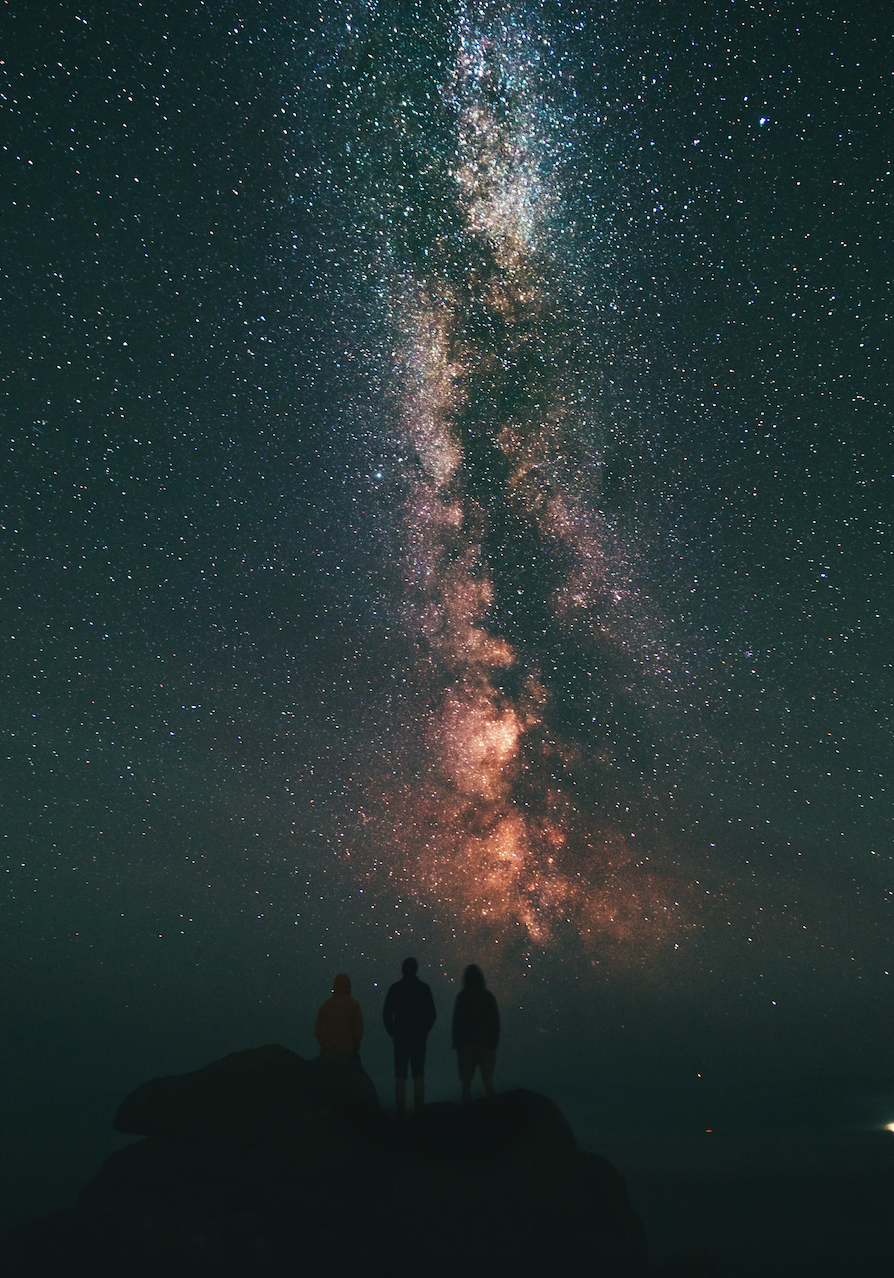When I could think at all, dredging the dregs of my brain from a deluge of tears, gasps, nausea, and hallelujahs, my eyes spinning in sensory overload, my ears pounding to Wagnerian chords, my heart throbbing with pain or celebration—when I could think at all, I say, while plunged in the floodtide of Harry Potter’s final horror and glory, all I could mentally mutter was, “How am I ever going to review this? It’s perfect!” And it very nearly is—except for a serious shift from Christian significance to pagan religion. But certainly feels perfect while it’s playing.

Last year, I wrote in a review of The Voyage of the Dawn Treader that there are several ways of critiquing a movie adaptation of a book. First, the film can be assessed simply as a movie without reference to the book. Second, it can be judged on its success in translating the plot, characters, dialogue, and description from the page to the screen. Third, it can be evaluated as an expression of the original author’s worldview. Finally, it can be such an overwhelmingly powerful experience, sweeping up emotions and senses in its tidal wave of sights and sounds, that it well-nigh defies critique of any kind.
Harry Potter and the Deathly Hallows Part II is just such a deafening, dazzling maelstrom and thunderstorm of power and scope. It is magnificent. It inspires terror, love, grief, and sheer seat-gripping adrenaline rushes galore. With a powerful musical score by Alexandre Desplat and brilliant cinematography by Eduardo Serra, this film (especially as I saw it, in headache-inducing IMAX 3D) washes over its viewers in wave after wave of emotion and sensation. This eighth film is more than a fitting ending for the epic series: the first seven movies each building, little by little, in scope and impact towards this thundering close.
Harry Potter is the epic of our times. Its affirmation of the intelligence of children, the necessity of parental care, the priceless value of loyalty, the depths of sacrificial friendship, the rewards of courage, and the redeeming power of love are all timely, timeless, and essential. While the individual movies in the series varied in their precise adaptations of the books and in their cinematic qualities, they translated J. K. Rowling’s underlying concepts reasonably well. And while the previous installments, especially the first two, could be critiqued for some poor filming and acting, the visual effects and dramatic pacing of number eight put it nearly beyond critique a work of cinematographic art.
There are, of course, changes from the books that may annoy textual sticklers. Some changes are for the better. [Spoiler alert!] Snape’s horrific death (sickening on screen) includes some imaginative changes: he gives Harry his tears, rather than the usual silvery-white thought-threads, to watch in the Pensieve, embodying regret, remorse, and love in his final act. He is also given a revelatory final line, the quintessence of his sorrow and fidelity, that humanizes him more than the book did.
In another surprising twist, Harry destroys and discards the Elder Wand without repairing his own holly-and-phoenix-feather wand, as if following Prospero in a recantation of all magic:
…But this rough magic
I here abjure…
…I’ll break my staff,
Bury it certain fathoms in the earth,
And deeper than did ever plummet sound
I’ll drown my book.
… Now my charms are all o’erthrown,
And what strength I have’s mine own…
(lines from The Tempest by Shakespeare)
Indeed, no one is seen doing any more magic-with-wands for the rest of the film, and the adult Harry, Ron, Hermione, Ginny, and even Draco resemble well-dressed middle-class Muggles. Like the ending of one of its great predecessors, The Lord of the Rings, this series ends not with the establishment of some grand new order, but with the restoration of ordinary, affectionate domesticity.
And yet, also like Tolkien’s work, the film brought out an aspect of the ending more like Frodo’s than like Samwise Gamgee’s. Sam was able to get married, have children, plant gardens, and thrive in his happy little Shire. Frodo, however, could not live a normal life after the deep scarring of his sacrifices and failures. He finally had to take ship from the Grey Havens to the lands in the West. Similarly, there is no clean sense of triumph at Voldemort’s destruction; rather, Harry and the others wander for a time in a desolate, empty victory. Color does not return to the screen until nineteen years later. Joy is slow in coming back to hearts so wounded.
Not all of the modifications that took place between page and screen, however, added depth and value to this awe-inspiring tale. Indeed, several changes were what can only be called theological in nature, with consequences far beyond offending a few purists. They shift the significance of the film from a healthy morality of sacrifice, repentance, forgiveness, and redemption to an anemic, bloodless theory of groundless self-confidence.
All of these errors occurred in the very end of the film: in the “King’s Cross” scene and the final confrontation. The public nature of the victory was stripped away: Harry conquered Voldemort in private, just the two of them face-to-face without the crowds. This is a crying shame, for all of those who fought for Harry and for righteousness thus lost the chance to hear the declaration of Snape’s innocence, the justification of the fighting, and the reason Fred, Remus, Tonks, and so many others died. This is also a misreading of artistic trajectories: it places Harry and Voldemort firmly back in nineteenth-century roles of solitary hero and individualistic villain, rather than in the more communal, public, collaborative, crowded arts scene of the twenty-first century. It’s a pity, because Rowling wrote a story for our times. Her Harry grew up at the exact rate of his readers, aging one year in each book at the same pace as their publication. His friendships, loves, and losses were those of his fans, projected onto a grand scale. By making the final battle private, the movie made the mistake of turning Harry into just another superhuman hero from a past era, disconnected from his Millenial devotees.
Even worse: all of Dumbledore’s lines about Harry’s blood were removed, as was Harry’s explanation that his own vicarious sacrifice protected his friends from Voldemort’s curses. Harry did not give Voldemort any chance to repent, nor were the Malfoys restored, changing a justly deserved punishment into shallow revenge and removing grace, forgiveness, and restoration from the story. Pushing the revenge theme further, the movie did not show Voldemort’s last killing curse rebounding, nor was it clear what spell Harry was using (it was merely Expelliarmus, the disarming spell, in the book)—so it was not clear whether or not Harry killed Voldemort. It is of the utmost importance, in the text, that he did not. This is what sets Harry apart. This is what defeats his disguises: the fact that he will not kill. He will fight, he will disarm, he will show as much bravery as any warrior, but he will not kill. He will not even kill Voldemort. He will not even defend himself if that means someone else’s death, but will submit to death rather than stoop to killing someone else. And yet, in the film, all appearances suggest that Harry killed Lord Voldemort at last. The movie’s message, then, is clear, and clearly changed: Fight to kill, if you fight for the right.
Most troubling of all was an added line in the King’s Cross scene: indeed, merely an added word. In lines superimposed in the screenplay, Dumbledore tells Harry that “help will be given to those who deserve it.”
Deserveit. That simple word “deserve” is worlds away from the morality and—what to call it?—philosophy of Rowling’s books.
To understand the tremendous significance of this single word, I would like to call Søren Kierkegaard to the stand. Well, since Kierkegaard is dead, and his writings are notoriously difficult to understand, I will call in a scholar to boil down the essential concept. Stephen M. Dunning, in The Crisis and the Quest: A Kierkegaardian Reading of Charles Williams (Paternoster Press, 2000), explains that Kierkegaard grouped all religions into two categories: Religion A and Religion B. Religion A is “the religion of divine immanence” (Dunning xiii) or the belief that God resides inside every human being. Religion A has a positive view of human nature and asserts that every person is essentially good, can act with divine righteousness, and can earn heaven. Kierkegaard sums this up by calling it, simply, “paganism.” I call it “the Disney gospel.” It enjoins its adherents to believe in themselves, to follow their instincts, and to claim the happiness they deserve. Religion B, on the other hand, takes a negative view of human nature, postulating the need for a divine action from outside the human individual before the person can be made good or useful at all. It claims that God is totally separate from and other than human beings, that people are naturally in a sinful state, and that only an act of grace from outside can transform people in creatures capable of goodness. This he calls just “Christianity.” I call it common sense.
With that one added line of Dumbledore’s, then, telling Harry he “deserves” help, the makers of the film shifted this epic from a Religion B morality tale about grace, forgiveness, and divine intervention to a Religion A story, an Ayn Rand tale of a self-made hero hewn from the infallible assertion that he is “special.”
Here, again, the movie makers turned their back on history and current events. Because the main problem with Religion A is that it just hasn’t worked. Two World Wars, a Cold War, countless other international conflicts, a War on Terror, two economic depressions, atrocities on every hand, American education is sliding along the dumbing-down scale into the murk of elementary feel-good mediocrity, rampant materialism and selfishness and stupidity… Religion A obviously is not a reliable description of reality. People aren’t little gods walking around doing good. They’re making hash of the planet and of themselves. So, sorry, Harry, you don’t “deserve” help—but help will be given you all the same. That’s the Deus ex machina with which every decent epic ends.
And that reminds me of another important factor in evaluating film adaptations of books. A valid question, to a textual fanatic like myself, would be: “But is it fair to compare every change to the books? After all, if there were no Harry Potter books, you wouldn’t be able to criticize the movie for changing the text. You would have to take it for its own face value.”
That is partly true. If there were no urtext, no literary primary source to which to compare the films, perhaps these flaws would go unnoticed, or would no longer be flaws. But on the other hand, there is no such thing as a work of art created in a vacuum. There are always all the other works that have preceded it and with which it is in dialogue. In this case, these include The Aeneid, The Odyssey, Beowulf, The Chronicles of Narnia, The Lord of the Rings, and, well: “…the life of the flesh is in the blood, and I have given it for you on the altar to make atonement for your souls, for it is the blood that makes atonement by the life” (Lev. 17:11); “Greater love has no one than this, that someone lay down his life for his friends” (John 15:13); and “For Christ died for sins once for all, the righteous for the unrighteous, to bring you to God” (I Pet 3:18). Those are the true subtexts to Rowling’s books, and it’s an eternal shame that the movie tried to erase them. In the end, however, it could not. For Harry did lay down his life for his friends. And that truth is there for viewers to discover—even if they don’t “deserve” it.



